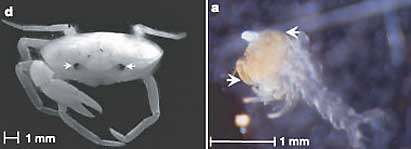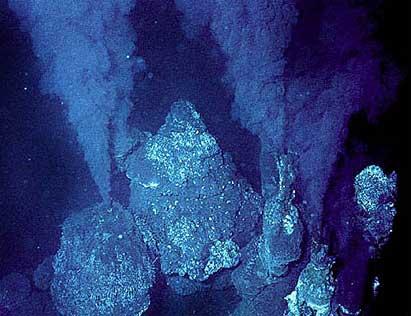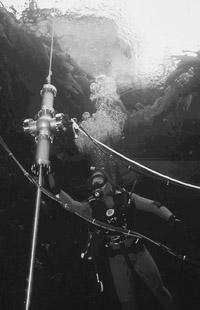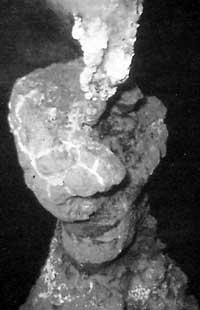Chameleons
2002/11/07 Elhuyar Zientzia

The crab of the image inhabits the Pacific, about 2.5 kilometers deep, around the warm chimneys of the bottoms. Darkness is total underneath, so it has no pigments on the skin, but still has eyes on the face. Around these chimneys, which emit heat and minerals, very special living beings have developed and, undoubtedly, the image is one of them. Why? because he has the ability to transform his eyes throughout his life.
The crabs of this species (Bythograea thermydron) have insect like eyes in the larval phase (right photo). It is a time when they do not walk very deeply, miles and a half from the surface, and their eyes are able to see a weak blue light at that depth. In youth they begin to descend deeper and the eye pigments adapt to see in lower dark waters. They produce a pigment that loses the pigment to separate the blue and detects the blue-green light emitted by some alive from those depths.
When ripe they lose all pigments (left image). The adult crabs live a thousand meters below their birth, around the hot chimneys, and have like eyes the unprotected retinas. These eyes are not able to generate images, but they are able to detect the low light emitted by chimneys. According to researchers, crabs use their eyes to calculate how far they are from the chimney. In these areas the temperature can reach 350C and the good calculation of the distances is fundamental not to die cooked.
The research has been published in the journal Nature by researchers at Marshall College in Lancaster.

Gai honi buruzko eduki gehiago
Elhuyarrek garatutako teknologia






